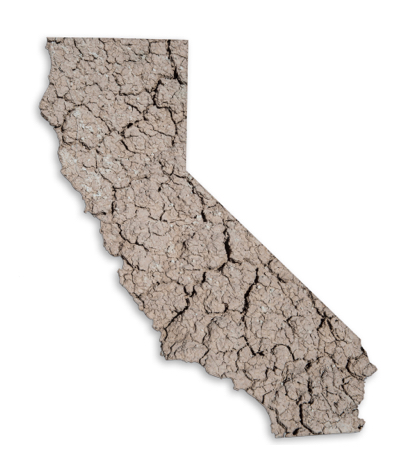Four consecutive years of drought and a less-than-hoped-for El Nino this past winter have not been wiped away by one winter’s worth of near average snowfall in the Sierra Nevada mountains.
A study published earlier this week in the journal Geophysical Research Letters, a publication of the American Geophysical Union, backs what state hydrologists have been saying in that it will take more than one year, perhaps several years, for the state to recover from the four-year drought.
“The main take-home is thinking about drought over longer time scales,” said the study’s principal investigator, Steve Margulis of UCLA’s Henry Samueli School of Engineering and Applied Science. “The first wet year doesn’t necessarily solve the longer-term problem. The deficit we have is so large it is very, very unlikely to recover in one year.”
Although consecutive dry years in California are common, the past four years – and now entering a fifth year in many parts of the state – are the most severe drought in the past 1,200 years, according to research cited in the journal’s study.
According to the new study, the snowpack will not return to its pre-drought levels until 2019 even if the state gets above-average precipitation in each of the ensuing years. Researchers at UCLA used NASA satellite and snow survey data to give them a more accurate assessment of the snowpack in the higher elevations.
“Going into this past winter, everyone thought El Nino was going to save the day,” Margulis said, referencing media coverage that called El Nino a “drought-buster,” or oversold its potential to diminish the on-going drought. Margulis pointed to two problems with such optimism: El Niño’s can result in heavy precipitation in coastal regions but Sierra Nevada snows have more mixed results and the new research supports hydrologists by saying even the “drought-buster” wouldn’t have been enough to replenish the state’s water deficit.
Snowpack is a mass of snow on the ground that is compressed and hardened by its own weight. It accumulates at higher altitude and as it melts in the spring and summer it channels water to mountain streams and rivers eventually winding to reservoirs and irrigation canals for later domestic and agricultural use.
Seasonal summer drought in California is normal. The snowmelt and other captured sources of water provide thirsty Californians with water in these dry months. However, thus far this year the snowmelt and runoff are melting rapidly and shorting rivers, streams, reservoirs of needed water.
The UCLA study found only a seven percent chance that the drought would be “fully alleviated” in 2016. They say a full recovery will take roughly 4.4 years. California has recovered from past droughts in as little as one year, including the 1977 drought, but this one is exceptional, per Margulis.
The new study will help water leaders and legislators better monitor and plan for future water policies. Since April 2015 when Gov. Jerry Brown stood in a snow-barren field, where the snow is usually dozens of feet thick, many Californians have closely monitored the status of snow in the Sierra Nevadas.
“It is critical for regions like California, that rely on their regional snowpack for water supply, to understand the dynamics of the system,” said Margulis.
 California Water News Daily Your Source For Water News in California
California Water News Daily Your Source For Water News in California


